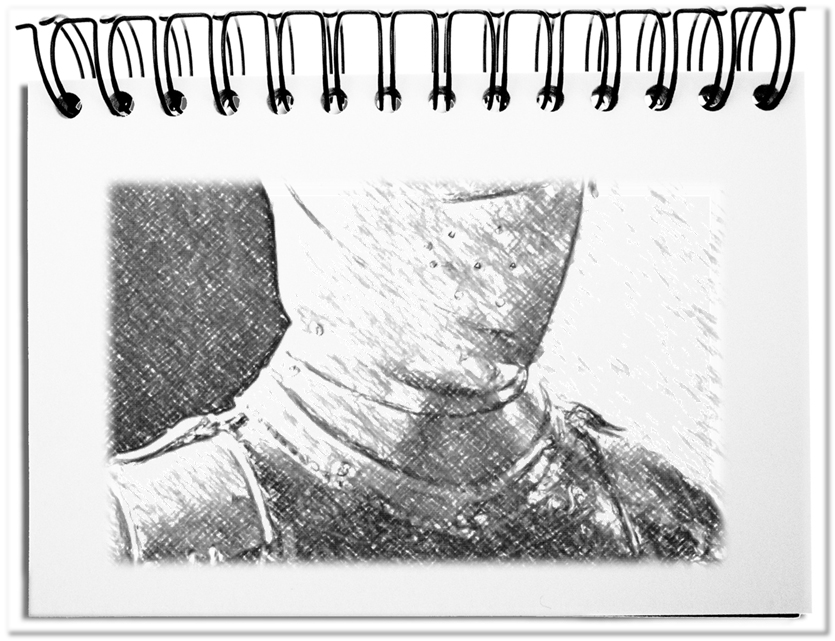Companies that already exist and grew for a long time mastered many challenges – changed market requirements, new technologies, and various cooperation styles. Over time these companies developed a custom-made armor of rules and stipulations of organizational structures and procedures, which should cover, if possible, every eventuality. As the armament of a knight meant an additional weight of 30 kg, the enterprises also carry around enormous ballast of guidelines. Even if this armor is adapted to the proportions of its user, it limits the mobility and thus creates certain fragility. How to get rid off the “Fr”?
An armament consists of different metal plates that were forged for certain parts of the body of a distinct person – the helmet, the piece of chest, the arm things, the thigh cover, the elbow, the knee piece, the leg tube and much more. Also the enterprise develops internally regulations for its different areas. In order to become agile it is crucial, to consider the following aspects.
- Vision
The picture of an ideal, in the future agile state of the enterprise forms the basis for the renouncement of over years developed, detailed determinations. The vision is built upon the ideal employee conception, the other resources and the customer-oriented cooperation. The elements that obstruct this vision have to be dissolved. - Convictions
All involved people developed by and by mindsets that disturb the agilization. The employees have to let the expectation go that they have to be motivated, trained and assigned from the outside. The managers must let go that they directly steer, control, and sanction the employees. The magic word of the future is self-organization. - Intrinsic motivation
In order to keep the momentum in an enterprise, appropriate extrinsic rewards and incentives were developed – the payment, the bonus, the career, and the training. In self-organization other incentives that drive the employee from the inside become important – the satisfaction to accomplish an activity, to have a skill, being able to satisfy one’s curiosity or to be able to reach a personal purpose with the activity. - Trust
The company owners have to carry out the greatest deal of trust. They can’t avoid to give up the direct influence and to believe that the internal society, the employees, steer the economic fate in such a way that the enterprise remains economically viable and lucrative. The confidence that the intrinsic motivation guarantees the necessary employee interaction and that way productive results appear spontaneously is the pre-requisite for the fact that the employees after all get the chance to prove themselves. - Organizational openness
To open the existing chain mail, in order to let evolve the possibility for self-organized networking and team building, requires great courage. The corporate DNA is burned into the consciousness of the employees in such a way that it requires a large effort to get away from the cherished sense of security. One company and two approaches require neutral zones, where the employees can try themselves out, without having to follow the established, old way. - Governance
The introduction of a fundamental set of rules that describes briefly and easy to understand the new principles, the ways of alignment, the common view and clear tasks, authority and responsibility, is an important pre-requisite. It is conceivable to introduce special areas, as China did with its special economic zones (e.g. Shenzhen, Hainan, and Hong Kong). In this area completely new approaches can be tested – Holacracy, pods, platforms. - Platform
Self-organized units are focused on their topic. Repeating activities and generally needed services disturb thereby. For this reason, it is smart to liberate the teams from certain basic tasks. The bundling of these items in a platform increases the effectiveness of the units. In the platform you can find standardized procedures and tools as a service – IT, infrastructure, logistics, etc.
In the course (Fr)agility, the employees consist not only of the executing people, but also the steering ones, the so-called management. The upcoming loss of power that results from the self-organization is the largest challenge, since guidance results in the future out of context and no more from the classical career. The person will lead, who inspires and engages people at most and no more the best adapted careerist.
Bottom line: The (Fr)agility of companies is determined by the armament that limits the mobility. This includes the structures and procedures, the established set of rules that tries to regulate every detail. In order to create the transformation to an agile organization, it needs a vision, common convictions, an intrinsic motivation, trust, an organizational openness, governance and a common platform that is available for the agile units. The agility is threatened by those, who loose the most – the leaders. For this reason, they need perspectives that show them opportunities for survival.

